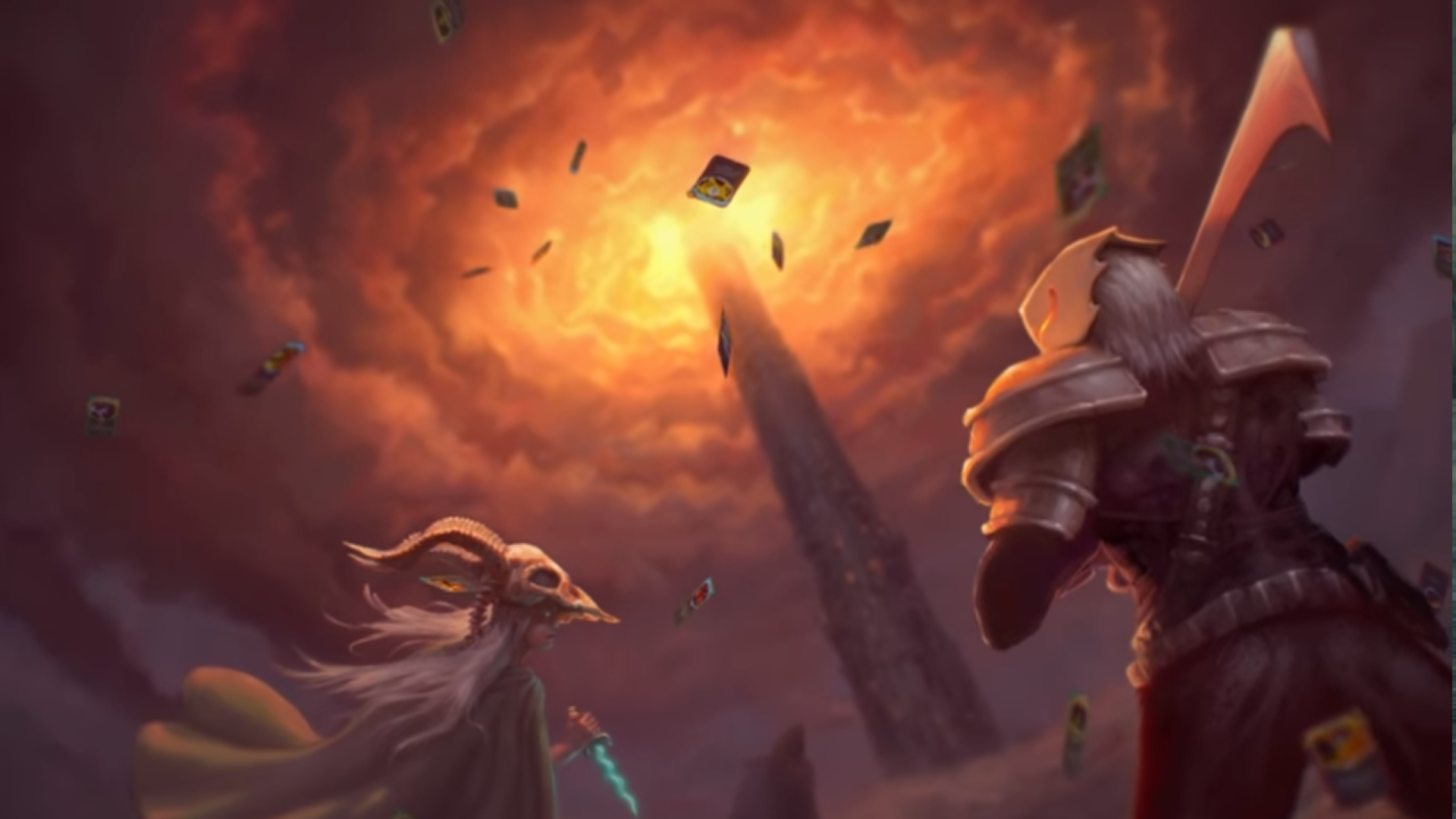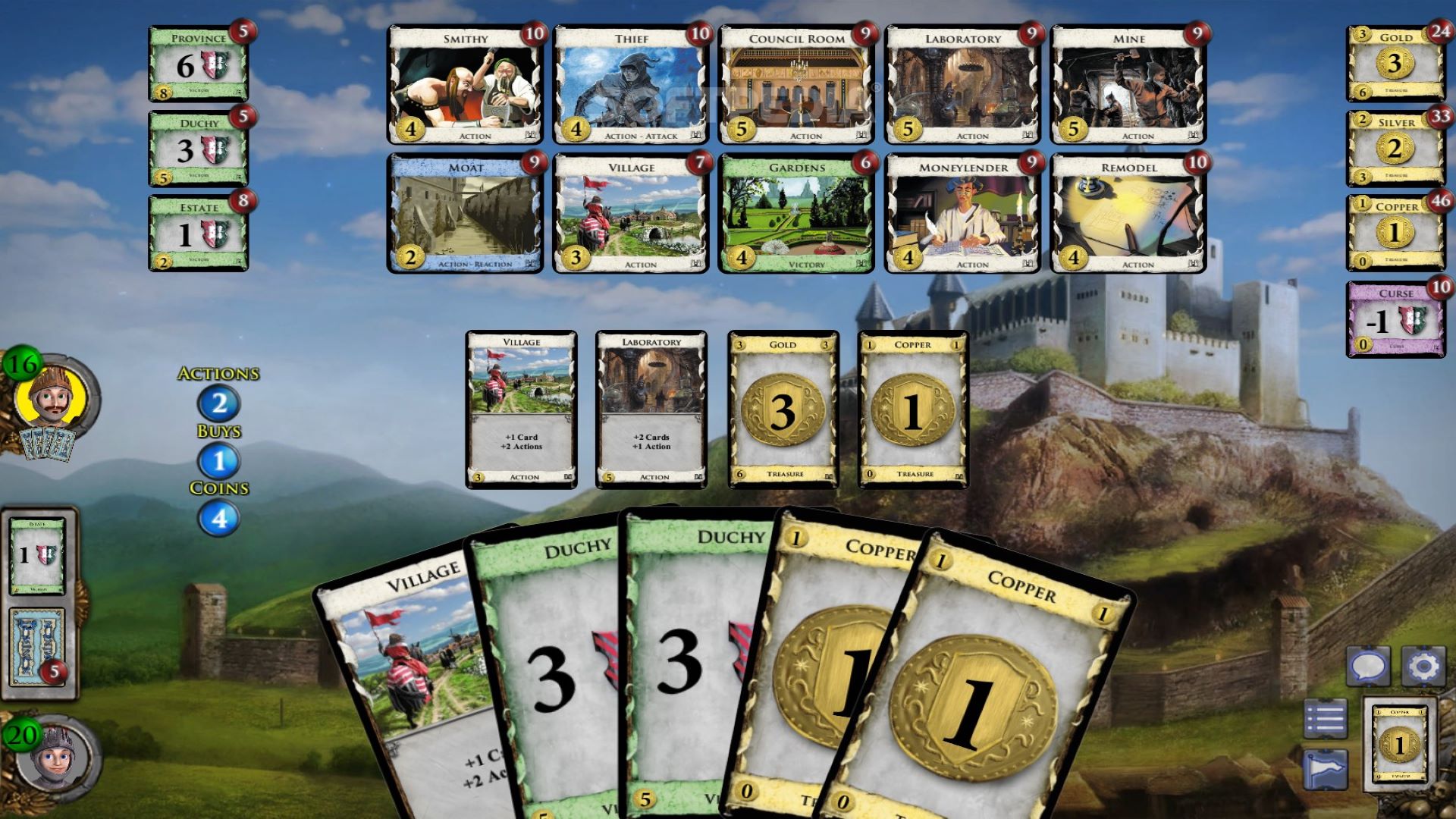Shuffle Up: The Evolution Of The Deckbuilder
Where the deckbuilder came from and how indies are capitalising on the latest strategy trend.

Friends, this year we have been truly blessed with a cornucopia of the finest new delights in interactive digital entertainment. A genre previously untapped in the digital realm is now delivering a steady vein of ludic minerals straight to our saturated ecosystem of battle royale and survival type games: the deckbuilder.
2019 has seen three large releases in the indie scene with Slay the Spire emerging from Early Access, Steamworld Quest: Hand of Gilgamech expanding the SteamWorld franchise, and Nowhere Prophet… coming out of nowhere!
The deckbuilder is indeed surging in popularity this year but the legacy of this genre runs deep. Card games in general have been increasingly popular on digital formats, what with the behemoth that is Hearthstone inspiring other card games like Artifact and Gwent. Where the deckbuilder genre differs from these collectable card games can, however, be difficult to distinguish if you don’t know their tabletop roots.
If we think of card games as a phenomenon stretching far back beyond Slay the Spire and Magic: The Gathering to Karuta, Whist, Hearts or Bridge then we might begin to think of the card as a platform for a multitude of different genres. The deckbuilder is one of them. One that we can trace quite handily, stemming from its CCG cousins but distinct in its mechanical approach.
Deckbuilders are, crucially, self-contained card games. Each player starts off with a small deck of low-level cards which they use to gain the upper hand by spending certain resources on better cards to develop their deck throughout the game. Players don’t have the advantage of spending enormous amounts of money on a killer deck – something that can be off-putting in Hearthstone or Magic.
So where did the deckbuilder come from? From the mind of one Donald X Vaccarino. Back in 2003, Vaccarino started to think about building a small individual deck of cards for each character in a dungeon crawling party. Each time you drew a card from that character you take one of their actions. “What I needed was cards that just said ‘deal 3 damage.’ Bam, end of story,” Donald explains, “but I wanted you to build up your heroes, that was a key fun part.” After developing the game further, Donald dropped the dungeon crawler element entirely to continue with the much more appealing idea of the deck builder.

Vaccarino says that “the concept was a game where you built a deck. I decided to take this to extremes: everything would be in the deck. Resources, actions, victory points, all in the deck. I didn’t do this for any special virtues it had, beyond sounding cool… I did it just for the aesthetic joy of putting everything in the deck.”
Each player starts with a deck of low-level cards. In the centre of the table are resource cards, victory point cards and action cards which give you abilities when you draw them. On their turn, players can spend resources from their hand to acquire cards from the middle of the table. They then discard everything in their hand and draw new cards from their deck. Your deck can’t be exhausted; it is just reshuffled with the new cards, making a stronger deck as the game goes on.
This prototype became Dominion. Releasing in 2008, it quickly garnered awards from all over the tabletop gaming industry, including the highly coveted Spiele Des Jahres. “When Dominion won the Spiel des Jahres, I got interviewed a lot, and sometimes people would say, did you expect it to be so successful? And, like the most egotistical person who ever lived, I would say, yes. Yes I did. I had seen what Dominion could do to a group of gamers,” reflects Donald.
The allure of deckbuilders was plain to see. The following year, the Japanese deckbuilder Tanto Cuore would release and the year after that, Ascension. Then, in 2014, Star Realms represented an important milestone in the genre. Designed by hall of fame Magic: The Gathering players Darwin Kastle and Rob Dougherty, Star Realms is a deckbuilder designed to deliver the TCG experience in an accessible manner.
Rob Dougherty’s experience with Magic The Gathering led him to lament the lack of accessibility in collectable card games, explaining that “you don’t get to just play the game. You have to spend a lot of money and spend a lot of time getting the components together in order to play the game.” Such accessibility achieved without reducing the complexity of a match was a fundamental aspect of the maturing deckbuilder genre that carried it through the years to modern play styles and trends.

Since 2008, dozens of deckbuilders have graced the tabletop. They’ve combined with other traditions an genres in fascinating ways. And now we are seeing video games go through this exciting process.
What’s interesting to notice is the different dynamics traditionally at play between tabletop and digital game formats. Tabletop games are mostly a social experience; board games are designed around how your decisions might influence others and the devious interactions between your friends. While video games can cater to both singleplayer and multiplayer experiences, they can also structure AI systems to play against. One of the best examples of a singleplayer deckbuilder is Slay the Spire.
Unleashed upon the world through Steam Early Access in November 2017, it took Slay the Spire a few months for sales to pick up, but when they did the game exploded in popularity. “It was pretty surreal,” says design lead Anthony Giovannetti. “We never expected the huge success that we had on our hands, to be honest. This was our first title as an unknown developer with no marketing budget.”

Slay the Spire has the player ascend a tower packed with hairy monster encounters and plenty of ‘choose-your-own’ pathways, all whilst building a deck. It’s a roguelike that sends you straight back to the bottom of the tower, and your basic deck, should your character’s health be reduced to zero. It follows the same deckbuilding premise of its forebearers: play as many cards in your hand as you can then discard them all and draw up. Shuffle your deck when it’s depleted and go again.
That Slay the Spire is a roguelike is an important part of its success. Procedural generation adds a touch of uncertainty to proceedings and permadeath elevates the tension of a run. It’s a combination of genres that plays so well it’s hard not to imagine that the two were made for each other. Giovannetti says that “prototyping came together incredibly quickly. Very early on, we were getting super positive results and we had a strong suspicion that we had hit on something good. Deckbuilding and roguelikes are really a natural mechanical pairing that mesh together perfectly.”
Once Slay the Spire hit its stride and started to attract enough eyes on its beautiful synergies, there was no question it was going to be popular. After selling over a million copies it would be almost natural to assume that it has single-handedly inspired a new wave of deckbuilders.

Knowing the history of the genre, the quality of these newly released games speaks volumes for the robust deckbuilder design. And though its history might only stretch 11 years back to Dominion, the strength of the genre has enchanted many with its charms. Martin Nerurkar is the creator of Nowhere Prophet, one of 2019’s hot new deckbuilders, and he is effusive about the genre’s origins. “Almost a decade back I played Dominion and it opened my eyes to the joys of deck-building and that has stuck with me ever since,” he explains. The format that Dominion introduced still holds strong and the feelings it creates do not diminish easily.
But what is admirable about this new wave of digital deckbuilders is how they draw upon influences and titles from contemporary indie games. The journey of the protagonist in Nowhere Prophet is designed out of admiration of another sweeping narrative. “The people and world of Banner Saga also stuck with me for a long time and made their way into the project,” Nerurkar reflects, “and FTL was a great example of replayability through random generation.”
Martin has gone further than to just layer a story over a deckbuilding system. Inspired by other contemporary indie games he has crafted something to push the genre further. Nowhere Prophet tells the story of a band of survivors in a post-apocalypic wasteland travelling in the hopes of a better life. Martin explains that “the fact that you have to take care of a group of people was always very important to me for the game. The aesthetics of being a leader and having to care for them, being responsible for their well being were really interesting to me… the twist to make them cards that can take damage and die was perfect as it solved a number of problems and tied two of the things that sit at the core of Nowhere Prophet together in a wonderful knot.”
The game adds so much tension through this. Cards become more than just throwaway damage dealers – they are the people in your caravan. It’s a great way to tie the narrative together with the card game mechanics at its heart, proving how new deckbuilders are stretching our understanding of the genre, introducing new ways of marrying story with gameplay and new ways of approaching that gameplay that keep themes fresh.

2019’s deckbuilder offerings are stretching their genre’s foundations, adapting it to new horizons and exposing us to new experiences.
There’s a fundamental joy that the deckbuilder has tapped into, and it is present in CCGs as well. Constructing a deck in which each card relates to another or builds from another card is an intensely creative and satisfying process. Stacking effects and triggering chain reactions can present amazing gameplay moments created purely by you, the player. Whereas a CCG relies on thousands of cards to present a player with the freedom of their own design, a deckbuilder provides the same creative free reign while limiting the onboarding costs.
It gives everybody the same hand of cards and the same opportunities, levelling the playing field and letting you earn every card in your deck. Martin Nerurkar is optimistic about the future of the deckbuilder. He hopes to see “a wider variety of settings and card mechanics. Slay the Spire has shown that action-based card combat works for a wide audience. And I hope that Nowhere Prophet will show that unit-based card combat works for a wide audience. There’s a lot of room there for more kinds of card combat.”
There’s a lot of room for this genre to expand and for stories to be told. It is still doing amazing things on the tabletop with Clank, Thunderstone Quest and this year’s biggest release so far, Wingspan. But we’re just on the cusp of video games really showing us how far this genre can go. Hearthstone has an inexorable pull to it, but these new deckbuilders of 2019 are a perfect way to discover that same joy in card games.
